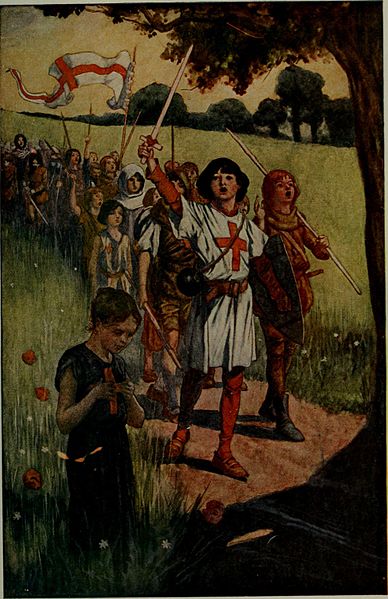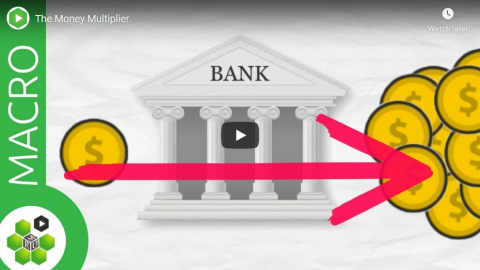Forgotten Weapons
Published 24 Sep 2019http://www.patreon.com/ForgottenWeapons
Cool Forgotten Weapons merch! http://shop.bbtv.com/collections/forg…
I wrote this paper back in 2003 or 2004 for a college class I was taking (HIST 595 – The Holocaust And Genocide). Today, it sounds a bit amateurish — but I suppose that is to be expected of something written by someone barely out of their teens. I think it could be much better written today, and its subject matter deserves much greater depth, but I believe its conclusions are sound. In particular, I would not be so casual in identifying the perpetrators simply as “the Germans”, as this is an unfair simplification of the guilt for the crimes of the Holocaust.
Some people will interpret this paper though narrow political viewpoints today, which is unfortunate. I shouldn’t have to say it, but obviously such interpretations are certainly not reflective of my own beliefs.
Bibliography:
Ainsztein, Reuben. Jewish Resistance in Nazi-Occupied Europe. Paul Elek Ldt, London: 1974.
Arad, Yitzhak. Ghetto in Flames. Holocaust Library, New York: 1982.
Berenbaum, Michael. The World Must Know. New York: Little, Brown, and Co, 1993.
Donat, Alexander. The Death Camp Treblinka. New York: Holocaust Library, 1979.
Gutman, Yisrael. The Jews of Warsaw, 1939-1943. Indiana University Press, Bloomington:1982.
Mark, Ber. Uprising in the Warsaw Ghetto. Schocken Books, New York: 1975.
Novitch, Miriam. Sobibor: Martydom and Revolt. Holocaust Library, New York: 1980.
Rotem, Simha. Memoirs of a Warsaw Ghetto Fighter. New Haven: Yale University Press, 1994.
Zuckerman, Yitzhak. A Surplus of Memory. University of California Press, Berkeley: 1993.
Contact:
Forgotten Weapons
6281 N. Oracle #36270
Tucson, AZ 85704
September 25, 2019
Forgotten History: Violent Jewish Resistance to the Holocaust
The Children’s Crusade against Carbon
Arthur Chrenkoff explains why political movements treasure and actively seek out the youth:

Illustration of the Children’s Crusade from Tales from far and near : history stories of other lands (1915).
York University Libraries via Wikimedia Commons.
It’s really a no-brainer. Revolutionary movements like communism and Nazism, which sought to overthrow the status quo and create a new society, have always placed huge importance on cultivating young following. I consider the green movement, particularly those sections of it that can be described as the Green religion, as a revolutionary movement too, because its main aim is to implement socialism under the pretense of saving the world from an environmental catastrophe.
There are several reasons why children and teenagers are so valued by utopian authoritarians:
1. As the cliché goes, children are the future. Invest in indoctrinating them now and your investment will last a lifetime, certainly outliving the less enthusiastic elders.
2. Children’s minds are more malleable and they are more impressionable, making them more receptive and accepting of your propaganda.
3. Peer group pressure helps to reinforce what the adults instill.
4. Children are (sorry children) ignorant and naive, having neither the sufficient education nor life experience that make adults more difficult to scare, persuade or bullshit into submission and belief.
5. Children have the energy and enthusiasm, which older people often lack.
6. Teenagers go through the proverbial rebellious stage, where they question their parents and other conventional sources of authority. This makes them very useful for the said revolutionary movements, whether fascist or socialist, which need to destroy the old, more conservative way of life so as to create a new social order according to their design.
The Money Multiplier
Marginal Revolution University
Published on 25 Jul 2017When you deposit money into a bank, do you know what happens to it? It doesn’t simply sit there. Banks are actually allowed to loan out up to 90% of their deposits. For every $10 that you deposit, only $1 is required to stay put.
This practice is known as fractional reserve banking. Now, it’s fairly rare for a bank to only have 10% in reserves, and the number fluctuates. Since checkable deposits are part of the U.S. money supplies, fractional reserve banking, as you might have guessed, can have a big impact on these supplies.
This is where the money multiplier comes into play. The money multiplier itself is straightforward: it equals 1 divided by the reserve ratio. If reserves are at 10%, the minimum amount required by the Fed, then the money multiplier is 10. So if a bank has $1 million in checkable deposits, it has $10 million to work with for stuff like loans and reserves.
Now, typically, the money multiplier is more like 3, because banks can always hold more in reserves than the minimum 10%. When the money multiplier is higher, like during a boom, this gives the Fed more leverage to move M1 and M2 with a small change in reserves. But when the multiplier is lower, such as during a recession, the Fed has less leverage and must push harder to wield its indirect influence over M1 and M2.
Next up, we’ll take a closer look at how the Fed controls the money supply and how that has changed since the Great Recession.
QotD: Big government is not human
An email from a correspondent, who is not in Guam, reminds me to remind gentle reader of a truth I take for self-evident, but perhaps others don’t. We personalize the State. I do myself, when I refer to it as Big Brother, Big Sister, Twisted Nanny, &c. But this is a conceit. As anyone caught in the jaws of Big Shark should realize, it doesn’t think like a human. It thinks more like a mechanism. Of course, when the mechanism has selected one’s own person for food — I am thinking here of the Revenue Department, but government agencies are all much the same — little can be done. One might beg for mercy, but the thing is not designed to dispense mercy. That is not its function. Its function is to absorb protein.
Guvmint agents themselves — the cells and their switches — are task-oriented. Each signed off his right to make humane judgements when he took the job.
We used to have reactionary courts, to restrain the creature. Now we have progressive courts, to urge it on.
Among the foibles of democracy, is the notion that “the peeple” are somehow in control. The people, however, consist of persons, with their quite various moral flaws, which tend to cancel each other. They elect politicians for show. This helps them put a human face on the enterprise, so they have someone to blame at the electoral intervals. It is true that a government with a majority and a will can alter the course of history: usually by putting more sharks in the tank. And that the policy wonks are, arguably, human. But they are cells themselves, within Leviathan.
We live, I say from time to time, in an age of “total war” and “total peace.” The one condition resembles the other: a command economy, focused on results. We have, as it were, totalitarianism with a human face. It is a kind of smiley face, painted on the tip of the missile.
David Warren, “Notes from the sheepfold”, Essays in Idleness, 2017-08-11.





